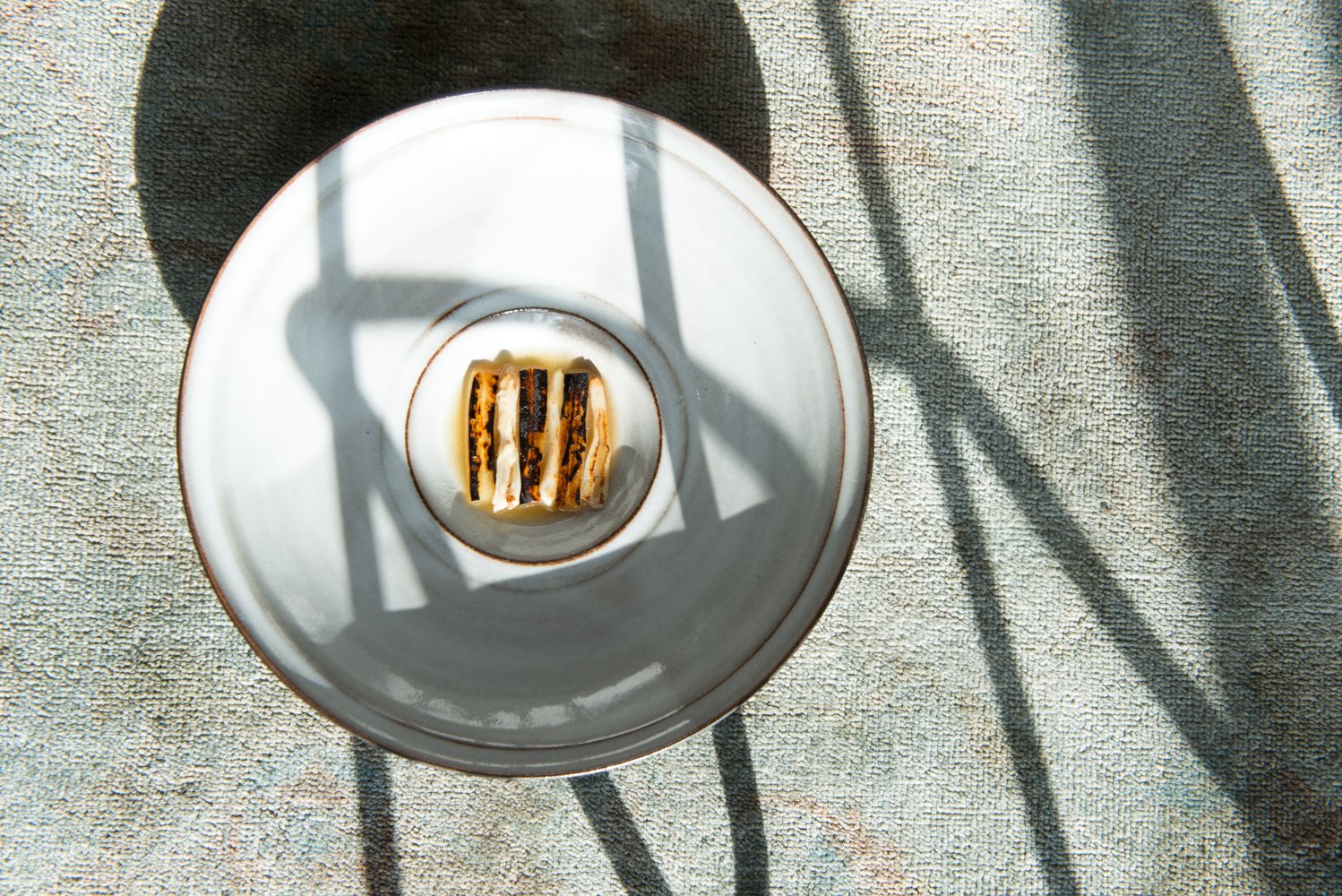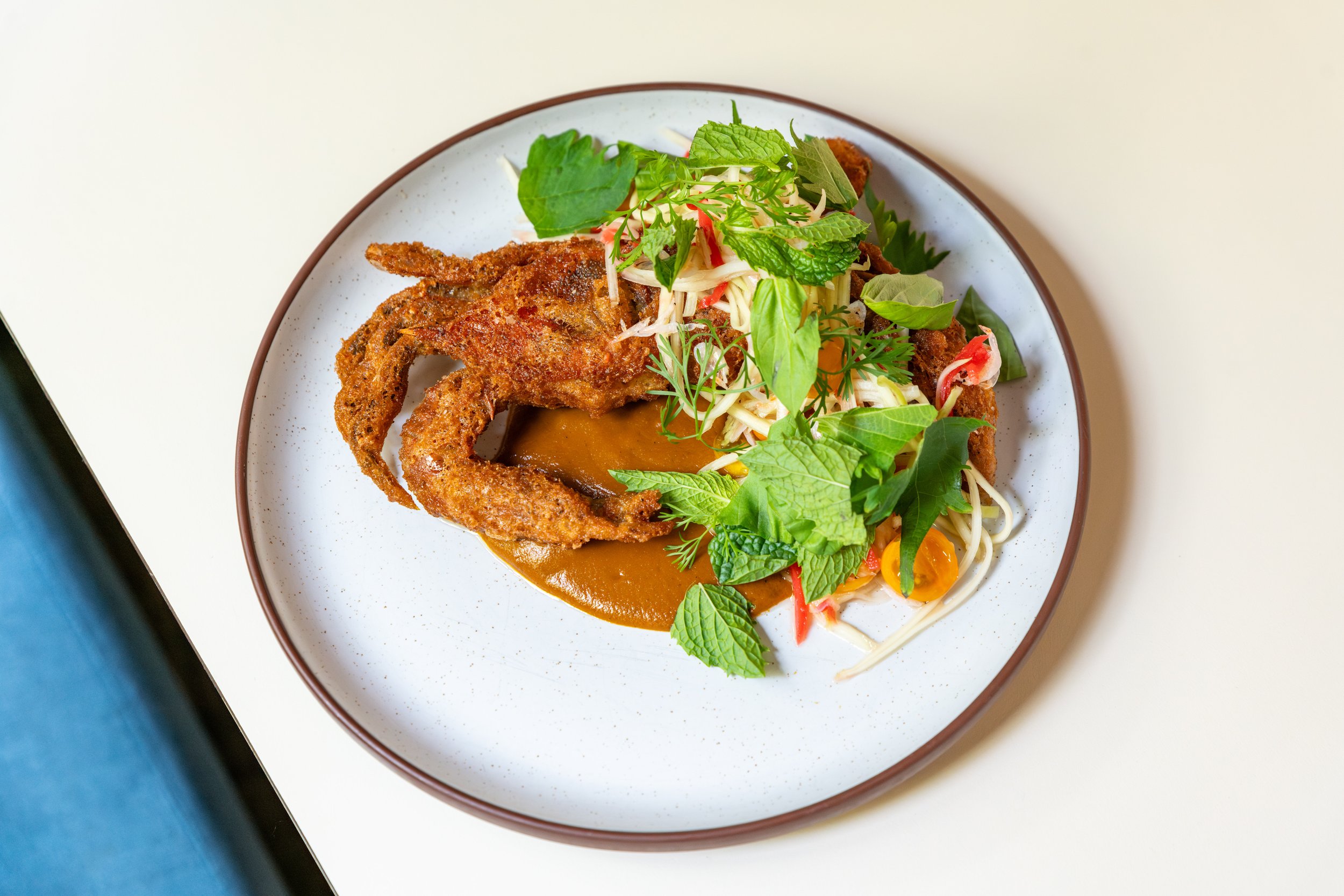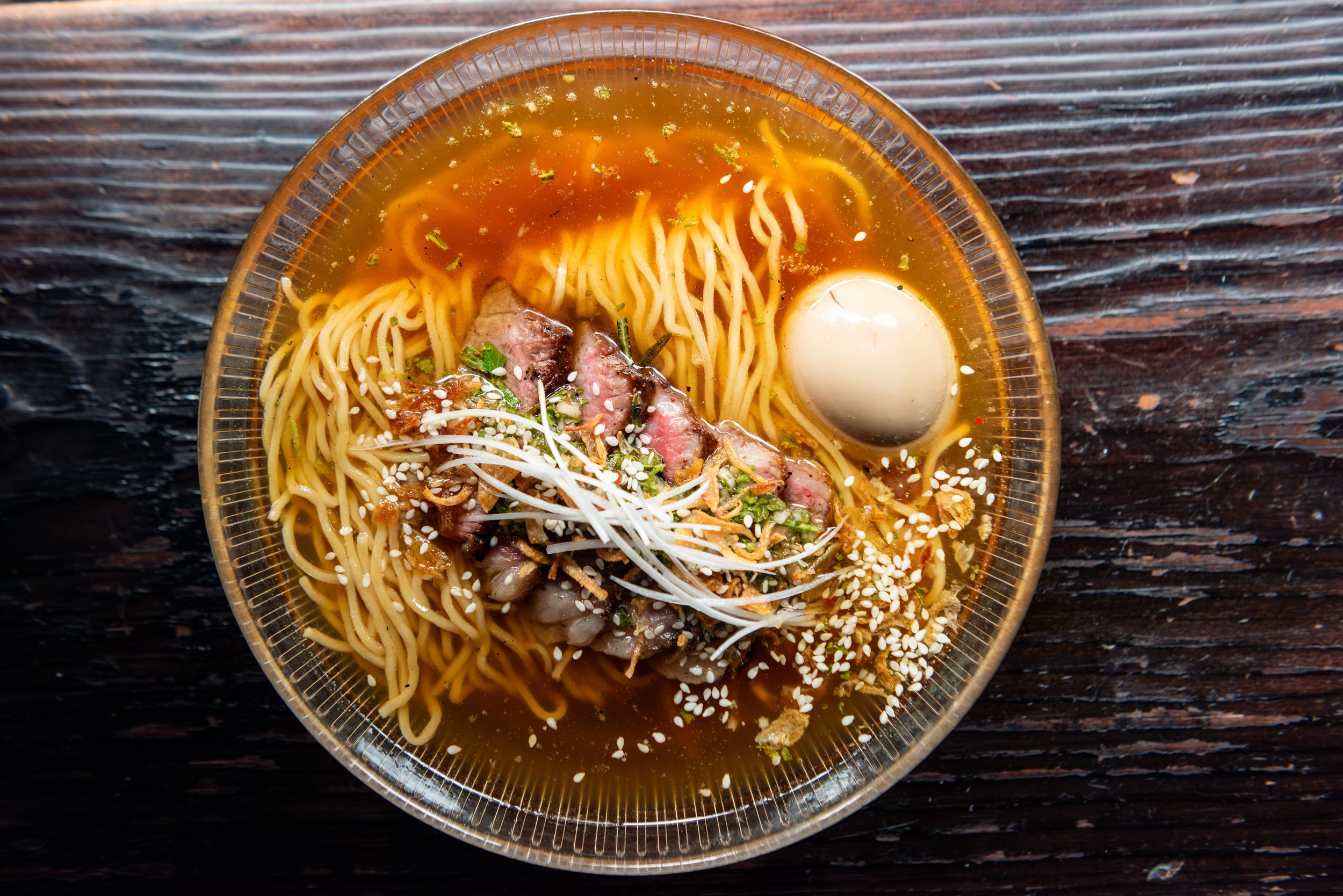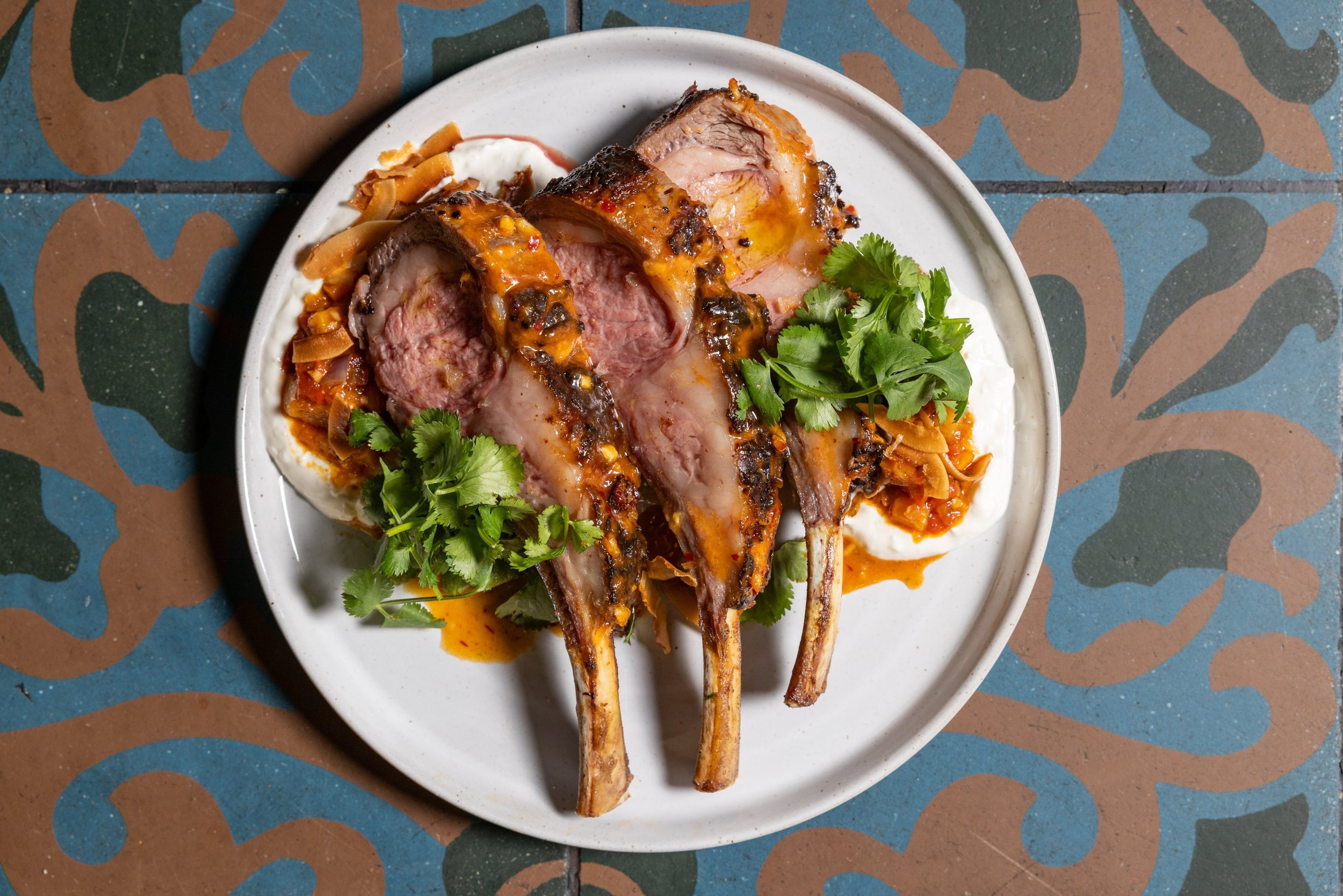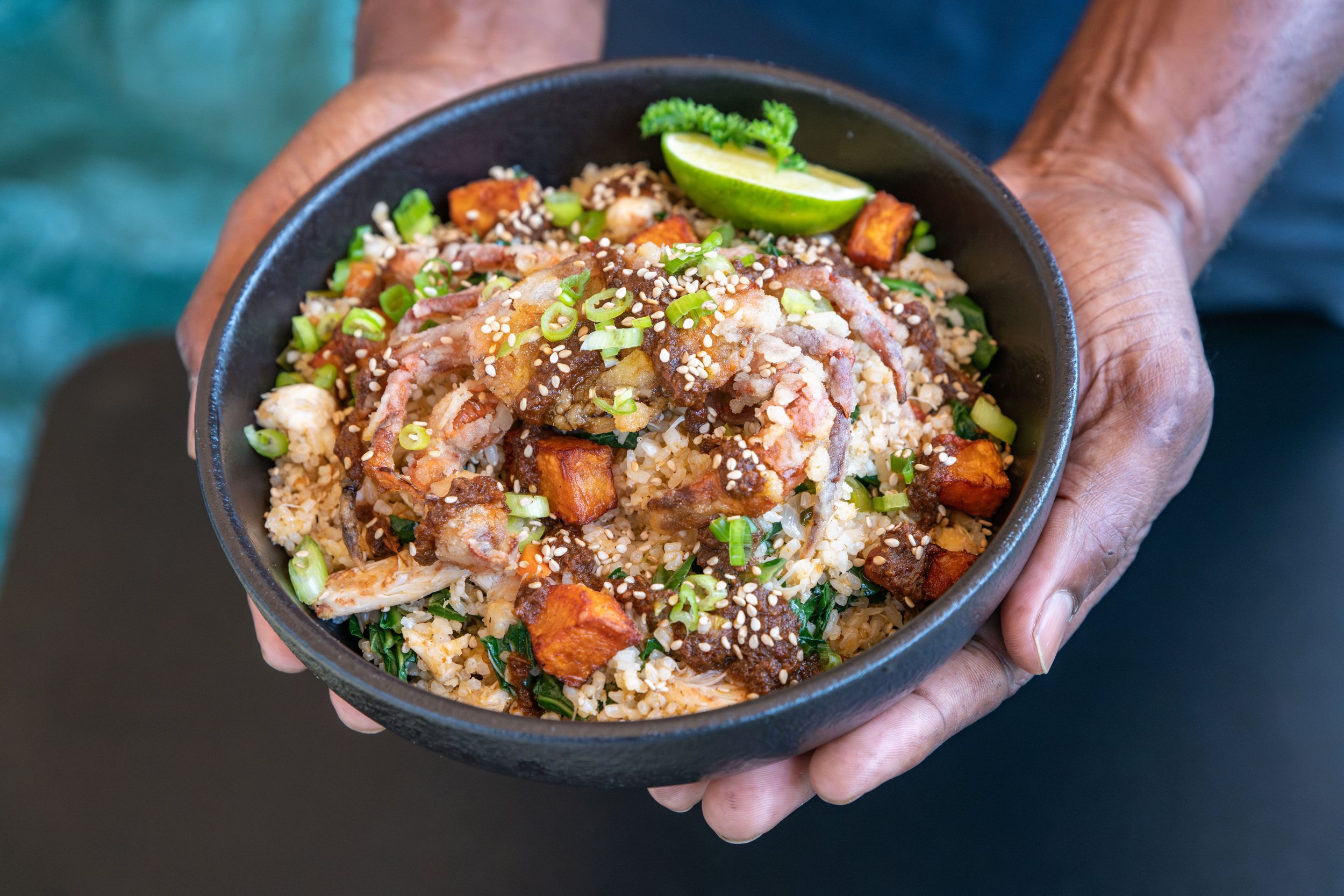Intuitive Creativity at Smyth
For Chef John Shields of Chicago's Smyth, every dish must have purpose.
When Smyth opened in Chicago’s West Loop, it had been four years since John Shields and Karen Urie-Shields had shuttered Town House, their rural destination restaurant in Chilhowie, Virginia. “I had a lot to say,” says Shields. Town House, with its isolation and complete freedom, had transformed the duo from protégés-of-the-greats to some of America’s most watched and original culinary voices.
When they first took over Town House, Shields and UrieShields stocked it with an Anti-griddle, a Gastrovac, a Pacojet, and a cotton candy maker, according to a 2009 piece in The New York Times. But it was the farmers and traditions of Smyth County, Virginia—not the modernist techniques of those heady times—that gave them vision and fueled them creatively. A year into their Chilhowie run, The Times quoted Shields: “We’re just stepping into our own style. Now it’s more like, what can we do with the normal stuff we see day to day? It’s becoming more about cooking and less about technique.”
That seed of style is a fully manifested philosophy at Smyth. “For me, it wasn’t enough to cook tasty food,” says Shields. “Every dish has to have purpose.”
For Shields and his team, inspiration and purpose most often spring from The Farm, about an hour outside of town, and their partnership with its tenders, Rebecca Papineau and her husband, Alan. “It’s not just a parcel of land with vegetables growing on it. There’s so much more biodiversity. There are 20 acres with history running through it. There are things to forage—things you couldn’t get on any farm. You have all these trees on the property and water nearby. There’s so much inspiration. Once you go there, it’s palpable,” says Shields.
Chef John Shields of SMYTH
Burnt Salsify, Razor Clams, Sunchoke-Chicken Bouillon, Fermented Asparagus, Yeast
Working with the Papineau’s eggs evoked memories of Town House when Urie-Shields was nine months pregnant and couldn’t cook. Shields briefly took over the Town House’s pastry program and would dump sugar on yolks for custards and bases. “The yolks would cure and begin to form a skin … and I would get yelled at,” he says. But it got him thinking, “Why not show off an egg in a dessert?” Shields made a crude cured egg dessert in Chilhowie and refined it this year for Smyth’s tasting menu. Together, black licorice-cured egg yolk, frozen yogurt meringue, and preserved black raspberries are a brilliant, textural nostalgia trip for anyone who grew up loving black licorice. The dish tells the story of The Farm’s eggs and raspberries. It’s also the story of his growth as a cook, his marriage, and a now 7-year-old son.
Admittedly, not every dish is quite so personal. “You don’t need a poetic story, to be honest,” says Shields. Distilling flavor or conjuring a moment may drive a composition, and, as with many of the best Midwestern kitchens, preservation and fermentation deeply influence Smyth’s menu. A dish of sweet shrimp, plump green almonds, and shrimp broth was born from shrimp miso prepared like garum with shrimp meat and shells and koji. After cooking for a few days at 40°C to 43°C, the miso rested for two months in anticipation of the dish—a true expression of shrimp-ness.
In January, Shields served a sorbet of fresh milk and pickled strawberries from the 2017 harvest. “It’s a bit of summertime with a foot of snow out,” he says. “I wouldn’t sell it in the summer. It feels trite, but in winter, it’s a different experience.”
Over the past two years, Shields has developed a greater understanding of The Farm and what it can yield, and he has developed a process for his cooks so that when cosmic purple carrots or bloody butcher corn arrives they can develop dishes thoughtfully. “It’s intuition-based creativity. We talk about products and research them. Where is it coming from? What else grows with it? We gather knowledge. When it comes, we use what we’ve learned throughout the years—taste and travel—and make decisions, as opposed to beating things up.”
Another facet of Shields’ cooking is quieting all the noise of the kitchen so his crew can listen to the product. “It’s corny, but I really do believe that ingredients tell you what they want. I don’t want to force a shape out of them. It’s important to sit back and listen, to be aware,” he says.
Poached Dungeness Crab, Scrambled Kani Miso, Salt Water-poached Foie Gras, Kelp Chips
Shrimp, Shrimp Miso, Compressed Green Almonds, and Shrimp Broth
Achieving awareness, a certain level of openness and calm, isn’t a hallmark of most culinary training. Shields looks for natural leaders when he hires—people who see the big picture rather than just putting their heads down and working—and then he teaches them. Smyth is a tightly run ship driven by “linear thinking” and obsessive cleaning and organization. Station set-up in non-negotiable. Deli cups are spotless. Even shallots destined for the blender must be precisely sliced. “I instill in my team that every move counts. You train like an athlete or someone in the army, and then you’re always prepared. When you work in a certain way, your mind is clean, and with ingredients, you can be more organic.”
When a farm is the soul of your tasting-menu-only restaurant, dexterity is essential. Smyth’s menu changes day to day, hour to hour. In the course of a service, the kitchen might call an “Omaha” and reimagine an entire dish. (The Omaha is a reference to Quarterback Peyton Manning’s audible calls). Smyth’s Omahas are kitchen jazz performed at the highest level, possible only when cooks know the roots, fiber, and purpose of the dishes they’re serving.


